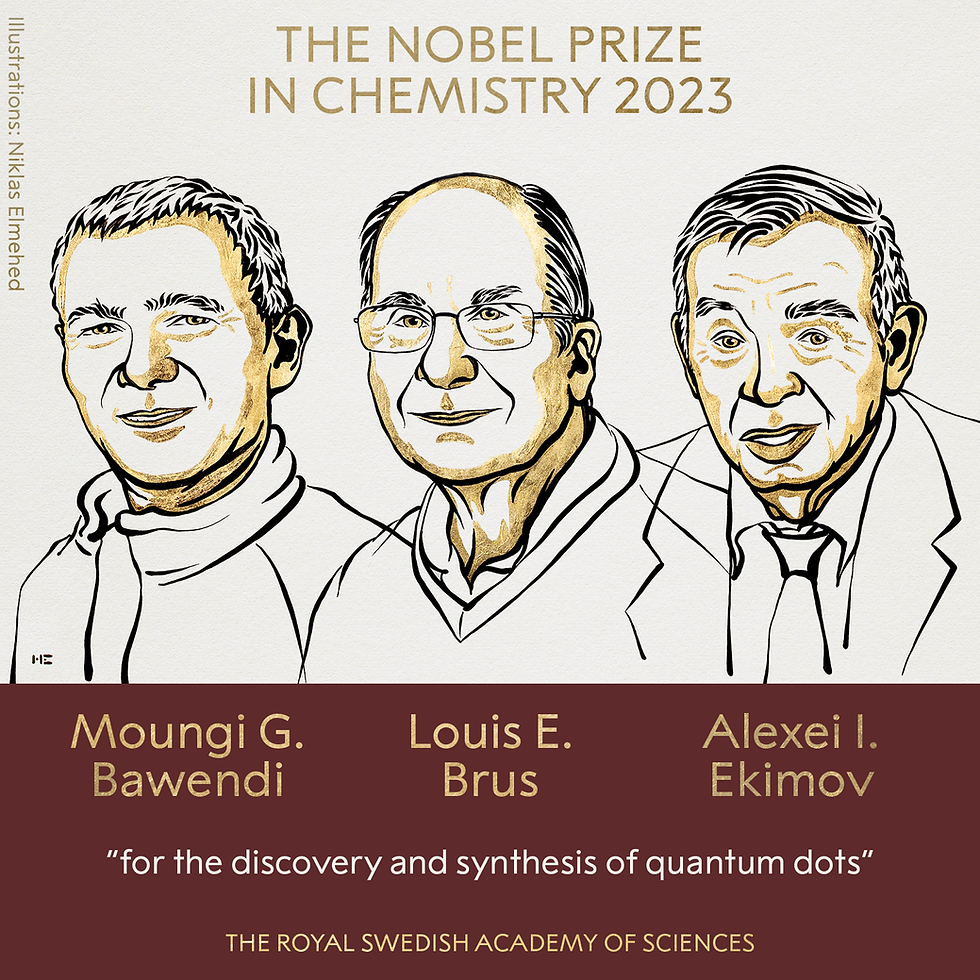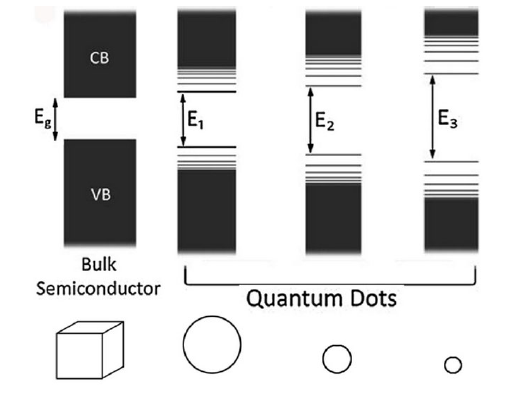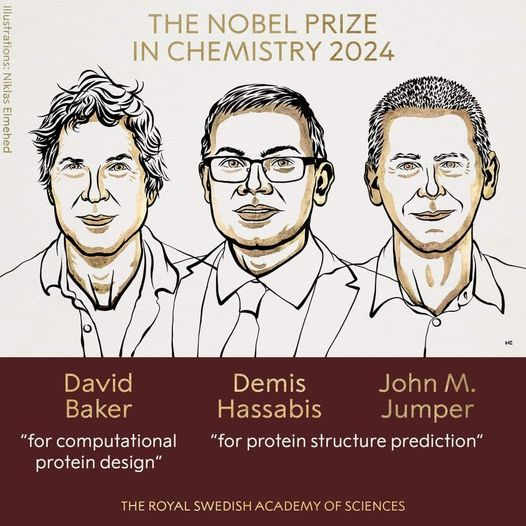!! Nobel Prize in Chemistry 2023 !!
- Shubhayan Mukherjee

- Oct 4, 2023
- 3 min read
Today marks an exciting day for physicists, particularly those involved in the field of Material Science. The Nobel Prize in Chemistry for 2023 has been announced, recognizing a significant achievement in Nanotechnology. Heartiest congratulations to Prof. Moungi G. Bawendi, Prof. Louis E. Brus, and Prof. Alexei I. Ekimov.

Source: The Nobel Prize (LinkedIn)
Now, let's delve deeper into the subject. The Nobel Prize has been awarded for the groundbreaking work on "The discovery and synthesis of quantum dots".
But what exactly are "Quantum Dots"?
Quantum dots represent a unique category of materials, distinct from both molecular and bulk substances. Although they share the same atomic structure and composition as their larger counterparts, their standout feature lies in the ability to finely tune their properties by adjusting one critical parameter—the size of the particle. This characteristic grants quantum dots remarkable versatility. For instance, consider CdSe quantum dots; their optical behavior, including absorption and emission, can be precisely tailored across a wide spectrum within the visible range. This size-dependent trait opens up a myriad of possibilities for applications, from cutting-edge electronics to advanced biomedical imaging techniques. This potential to customize properties based on size signals a new era in material science, carrying profound technological implications.
To put it simply, a quantum dot is a minuscule semiconductor particle, typically ranging from 2 to 10 nanometers in size. Due to their small scale, they exhibit distinct quantum mechanical properties compared to larger particles of the same material. These properties are particularly crucial in the field of nanotechnology and have a wide array of applications, from electronics to medical imaging.
The journey of quantum dots involved contributions from numerous researchers over several decades. In the 1980s, scientists like Alexei Ekimov and Louis Brus independently observed quantum confinement effects in semiconductor nanocrystals. Essentially, when a semiconductor particle is extremely small, its electronic properties become "quantized," meaning they can only take on specific discrete values. This was a pivotal insight into the behavior of quantum dots.
Moving forward to the 1990s, Moungi G. Bawendi and his colleagues played a crucial role in advancing the synthesis and understanding of quantum dots. They developed methods for producing high-quality, monodisperse quantum dots—nanoparticles with uniform size and shape. This precision in manufacturing marked a significant breakthrough.
If I'm not wrong, the term "quantum dot" was coined by Mark Reed and Randy Atkin at Yale University in 1988. Since then, quantum dots have become a focal point of research and innovation, revolutionizing various fields of science and technology.

Illustration of size-dependent bandgap. Reproduced from G. Dong et al., Frontiers in Materials 2, 1 (2015).
After this detailed explanation, let's focus on the significant contributions of the newly announced laureates in the field of Quantum Dots. [Source: https://www.nobelprize.org/prizes/chemistry/2023/advanced-information/]
The groundbreaking work of Alexei Ekimov, Louis Brus, and Moungi Bawendi has played a pivotal role in advancing our understanding and application of quantum dots.
Ekimov's early investigations in 1979 focused on doped glasses, leading to the discovery of quantum size effects in colloidal particles within weak confinement regimes. While Ekimov's quantum dots were initially 'frozen' in glass, his work demonstrated the feasibility of observing profound quantum size effects in suspended nanoparticles.
Louis Brus, in 1983, provided further evidence of quantum size effects by studying CdS crystallites. Through innovative synthesis methods, Brus and his team prepared small CdS particles, highlighting the distinct electronic states between fresh and aged particles. This difference was attributed to a quantum size effect influenced by electrostatic interactions between electrons and holes.
In 1993, Moungi Bawendi and his colleagues introduced a method for synthesizing quantum dots with precise size control and high optical quality. This approach, known as the hot-injection synthesis method, allowed for the reproducible production of monodisperse nanoparticles across various material systems. Bawendi's work revolutionized the field, enabling the development of large-scale applications for quantum dots. Collectively, the contributions of Ekimov, Brus, and Bawendi have significantly advanced the understanding and utilization of quantum dots in various technological domains. This year, both the Nobel Prize topics in Physics and Chemistry have captivated physics enthusiasts immensely. Science must always forge ahead.

Source: Nobel Prize (FB Page)




Comments